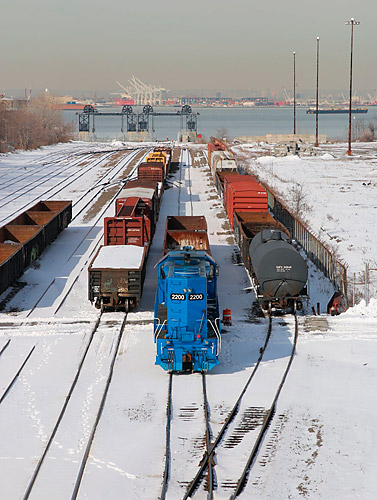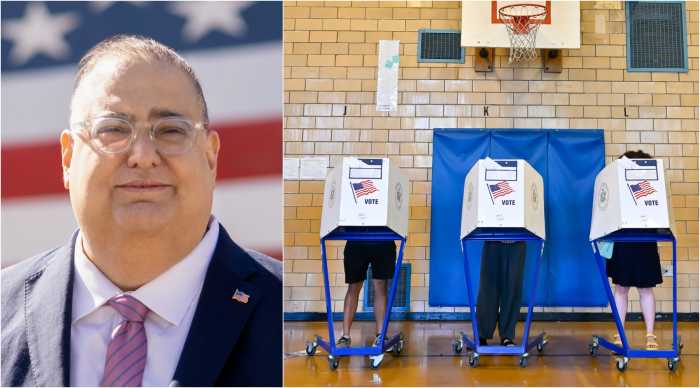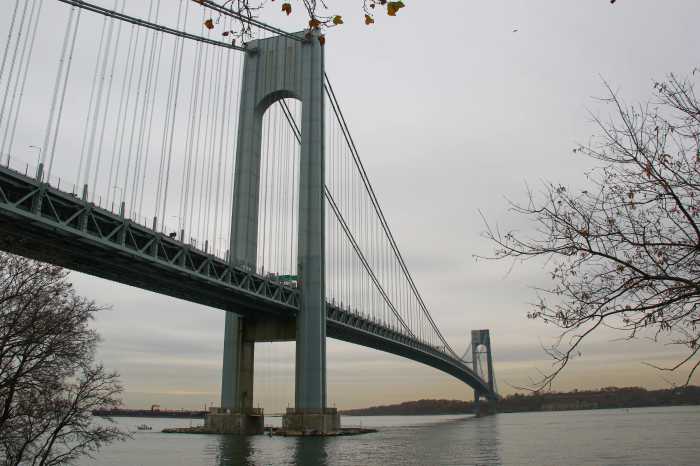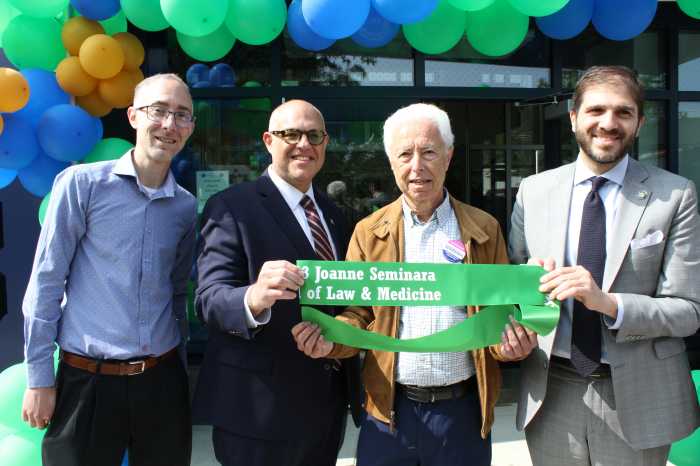Government bigwigs say they want to cut down truck traffic in the city by re-imagining how goods are shipped to the area, and a long-proposed rail tunnel from New Jersey to Brooklyn is back on the table. The Port Authority of New York and New Jersey has put together 10 proposals it thinks could get the job done. Now, it’s asking for your input into what should be done next.
We’ve done the heavy-lifting, sifting through the several-hundred-page study to find out how the plans will affect us. Here’s the breakdown:
Project rationale
The project’s goal is to reduce truck traffic on regional roads and improve the region’s shipping capacity, said Port Authority general manager Matthew Masters.
Trucks carry more than 90 percent of goods from the mainland to Brooklyn and Long Island, and the Verrazano-Narrows Bridge alone sees 45,000 daily truck crossings for that purpose, according to the impact statement. The Hudson River rail crossing closest to New York City is 140 miles to the north Selkirk, New York. The reliance on surface transportation is clogging the region’s roads, contributing to pollution, and causing undue wear on roads, raising maintenance costs, the study states.
The Authority outlined 10 alternatives for shipping goods from New Jersey to Brooklyn — five waterborne proposals to float railcars or trucks across the harbor, and five proposals that rely on a tunnel under the harbor connecting New Jersey and Bay Ridge.
The plans stand to divert between 300,000 tons and 24 million tons of freight from roadways in a 53-county region around New York City, the study states. Rail tunnel alternatives would have the most impact on truck traffic, according to the impact statement.
The waterborne options could cost hundreds of millions of dollars, take two years to complete, and create hundreds of jobs. Tunnel alternatives would cost as much as $11 billion, take a decade to complete, and generate thousands of construction jobs, according to the statement.
Under any plan, the Port Authority would have to rebuild 25,000 feet of the Long Island Rail Road’s Bay Ridge Branch — deepening the trench by as much as 10 feet, shaving the bottom of railroad overpasses, constructing a second track, and moving the Buckeye Pipeline, which delivers jet fuel to Kennedy Airport — to accommodate larger freight cars, officials said.
If the Authority doesn’t take up any of the plans, the 65th Street Rail Yard would still expand as part of already-in-motion projects, officials said.
The plan to cross the harbor with tunnel has existed in some form since the early 1900s — indeed the Port Authority of New York and New Jersey was created in part to solve the problem of getting goods directly across the Harbor, said Rep. Jerrold Nadler (D–Brooklyn), who has been a proponent of the plan since the early 1990s, and secured federal funding for the most recent impact study.
“The Port Authority was set up specifically to build such a tunnel,” Nadler said in testimony given before the Port Authority on Jan. 23. “The first Chairman of the Port Authority, Eugenius H. Outerbridge, said that the rail freight tunnel from Bay Ridge to Bayonne was the ‘keystone in the arch of the master plan.’ ”
Quality-of-life impacts
A cross-harbor rail tunnel would put nearly 564 additional trucks on the streets of Bay Ridge and Sunset Park each day, according to the study.
The rail options would also cause increased noise in the neighborhood. Currently, two 18-car trains pass through the 65th Street Rail Yards each day, creating noise around 71 decibels at the nearest residence, roughly the same volume as a vacuum cleaner. Additional trains would cause similar noise more frequently, the study concluded.
And buildings along 65th Street could be at risk from vibrations.
“In addition, anticipated vibration levels at the closest receptors of rail segments 1 (between the Harbor and Ninth Avenue) … would be strong enough to warrant concern over possible minor cosmetic damage to fragile buildings,” the study states.
Most of the construction would occur within the rail yards’ existing rights-of-way, but work could also impact private homes and public spaces, according to the study. Rail alternatives call for a six-story ventilation tower in the right-of-way between 11th and 13th avenues in Dyker Heights.
“There remains the potential for construction period activities to affect neighborhood transportation, air quality, noise, and visual and aesthetic conditions associated with construction activities,” the report states.
Waterborne alternatives would send as many as 380 additional trucks into neighborhoods from Red Hook to Bay Ridge, but would not increase noise levels or vibrations in those areas, the study found.
The Authority is taking comments until March 20. It will identify one or more of the alternatives for further investigation this summer, and then begin a more detailed environmental study pending funding, officials said. People can submit comments to the Port Authority by e-mailing feedback@crossharborstudy.com.


























